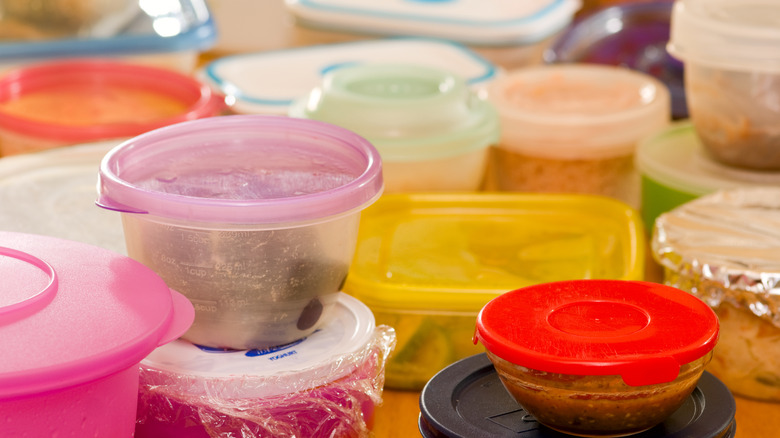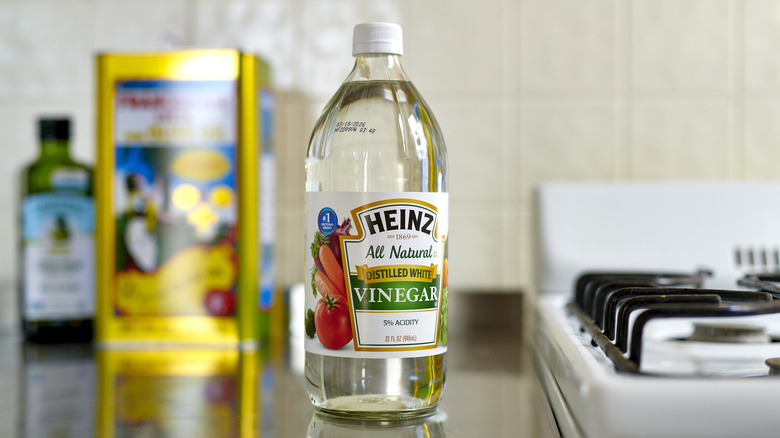Revive Stained Plastic Containers With A Secret Ingredient From Your Pantry
Ever put leftover chili or sloppy Joe meat in a plastic container only to fully forget about it until it's gone past its prime? The resulting stains likely left your oh-so-prized plastic storage containers looking pretty sorry, even after a good soak and scrub-down. Certain foods simply have serious staining potential, and although the typical dishwasher can eradicate much of it, sometimes a little extra help is needed. That's where garden variety vinegar comes in!
Vinegar is one of the most popular natural cleaning agents out there and for a lot of good reasons. Not only is it inexpensive (always a plus), it's also eco-friendly and non-toxic. This is why we can easily use it as both a food ingredient and a versatile cleaning tool! What really gives vinegar its oomph from a cleaning perspective, however, is that it is acidic. This makes it adept at breaking down stains, especially greasy ones that are so often caused by food products. Using it to eradicate stains from plastic storage containers is a simple process.
How to use vinegar to clean plastic containers
Savvy shoppers already know that there are multiple types of vinegar on the market. The best one to use to clean stains from plastic containers is distilled white vinegar. Compared with apple cider vinegar, balsamic vinegar, red wine vinegar, and so on, distilled white vinegar has an acidity level of around 5 (depending on the specific brand). It is also colorless, which means that it won't cause any unfortunate stains while it's working to eradicate the ones already there. These factors put together are what make the distilled white variety the best at removing plastic stains.
The other great thing about using vinegar to clean plastic containers is that it's extremely easy. All you have to do is add enough vinegar to cover and/or coat the stained surface. Then, let it soak at least overnight to work its magic. Pour out any remaining vinegar and then wash the container thoroughly. Ideally, all of the stains (and even any smells!) should be a thing of the past, but you can repeat as needed until it looks like new again.

